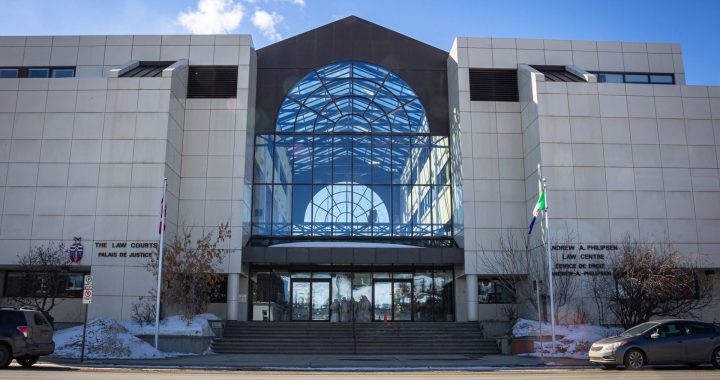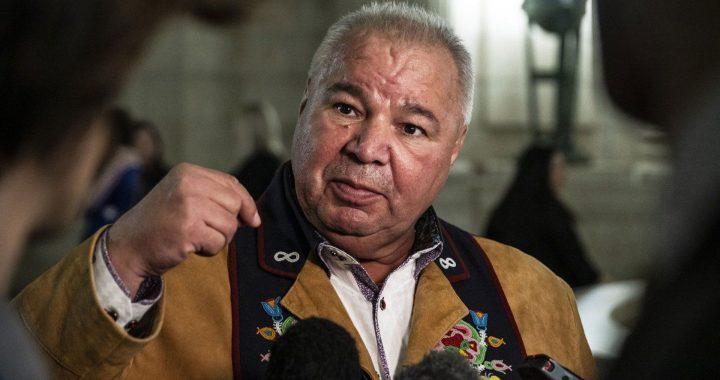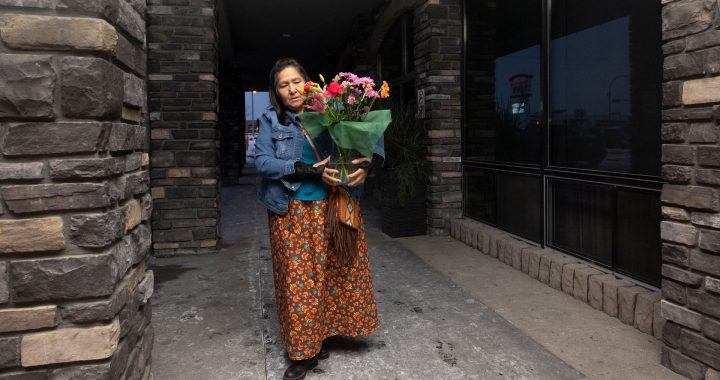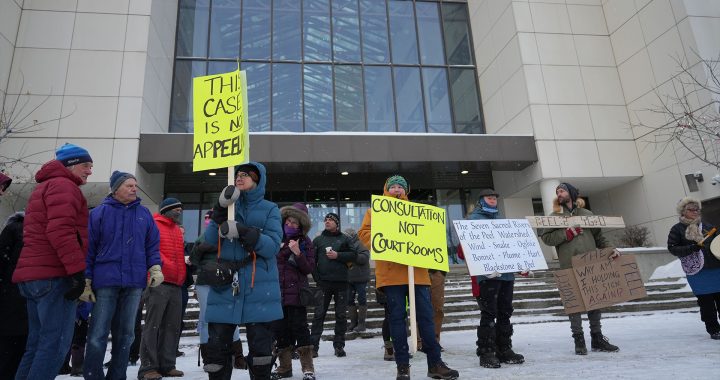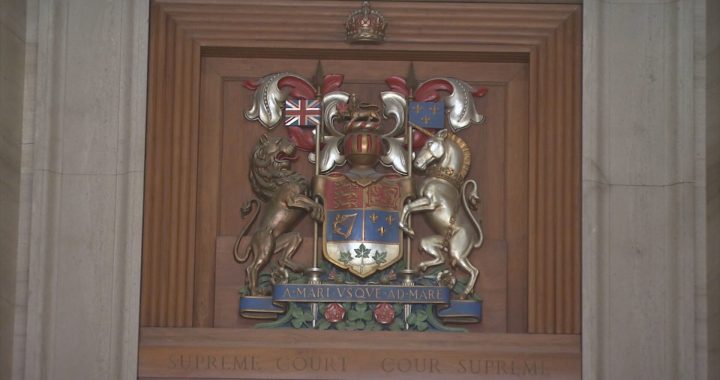Two First Nations in northern British Columbia say a dam owned by mining giant Rio Tinto has devastated their communities and are asking the courts to restore the Nechako River to a functional state.
Saik’uz and Stellat’en First Nations wrapped up their case outlining damage caused by the Kenney Dam to their nations in B.C. Supreme Court on June 10.
“This rock signifies the beginning of the destruction of our environment as I knew it,” said Stellat’en Chief Archie Patrick standing on the dam.
The dam, built by the aluminum producer Alcan in 1952, is now owned by Rio Tinto (Alcan).
The 200 day court hearing, which started in October but was delayed because of the COVID-19 pandemic, is also holding the B.C. and federal governments responsible for the destruction of the land.
At issue is the fact that the dam diverts nearly 70 percent of the water from the Nechako River.
The nations say construction and operations of the dam has had a devastating impact on their way of life and their Aboriginal title has never been addressed.
“We told the judge in our opening remarks our concern about the environment, our concern about the fish, our concern about the flow of the river and making sure there is enough flow and water to look after our salmon,” said former Saik’uz chief
According to Patrick, there was a lack of consultation.
“Nobody talked to us but they decided to do it, period,” he said.
According to Rio Tinto (Alcan), the $500 million project was the largest public and private project in Canada at the time.
The dam diverts water from the Nechako River to a Kemano power station to produce electricity for the aluminum smelter in Kitimat.
Excess power would be sold back to the B.C. government at a discounted rate.
Neither the government nor Alcan consulted with local First Nation communities.
“With respects, this represents the beginning of the destruction of our territory and really our way of life,” said Patrick. “Prior to that I was eight years old or six when it was being discussed. I remember listening to the elders of the time, who would have been born in the 1800’s.
“Discussing this and saying it’s an impossibility, they can’t destroy the land of that mass.”
When negotiations took place for the dam to be built, the Indian Act had amendments making it illegal for First Nation peoples to hire lawyers to bring land claims without the consent of government.
Current Siak’uz First Nation Chief Priscilla Mueller says consent has never been given from her nation.
“Back in the day couldn’t even hire legal counsel, now here were are, we basically had to force them to come to the table right,” she said.
“So now we’re in court.”
Rio Tinto released a public statement regarding the court case earlier in the month.
“Rio Tinto prefers to work in partnership with First Nations groups to build relationships that are mutually beneficial,” said the statement.
“Rio Tinto has, on a number of occasions, sought to find ways to resolve this issue without proceeding to court hearings,”
The two nations say they don’t have much of a relationship with Rio Tinto.
“It has had devastating impacts to our community members not only socially, environmentally, but culturally as well,” said Saik’uz Councillor Jasmine Thomas.
“We are seeing a alot of impacts at home as a result of this project.”
Both nations say their way of life has been affected due to the low flow of the rivers.
They say the impacts of the dam can be seen with a large watershed on one side and near empty dry canyon running eight kilometres on the other.
“We are known as Dakelh people, those that travel by water,” said Thomas. “So our rivers and lakes are our transportation routes, as well as our food source for our people. “
Now, they say, everything has changed.
“I remember being a little girl where we used to clean 200 salmon a day and now, which makes really sad is we have to buy our salmon,” said Mueller. “Our people come to the band office to pick up maybe two salmon. I just think we’re not a third world country.”
Another neighbouring nation that has been affected by the Kenny dam, but that isn’t in court is the Cheslatta Carrier Nation.
“This is enhanced flow ever since the Kemano one project, this is about 10 times the natural flow of the Cheslatta River,” said Mike Robertson, senior policy advisor for Cheslatta Carrier Nation.
This unnatural flow has caused massive flooding along other runoffs of the Nechako Lake leading to forced relocation of the Cheslatta First Nation shortly after the dam’s construction.
“The relocation happened from the annual flooding that went on,” said Cheslatta Chief Corrina Leween. “In order to build the dam, they flooded a great amount of our area and during that flooding period to create the reservoir people were evicted from their territories.”
Early in 2019, Cheslatta Carrier Nation signed a restitution agreement with the B.C. government.
They showed up at the Kenney Dam to support their neighbours.
The next phase of the case will allow Rio Tinto to present its case.
The Saik’uz and Stellat’en both say the goal is to have the watershed restored.
“We don’t know if it’s going to be restored a 100 percent, but we’re hoping most of it will be restored,” said Mueller. “It’s not acting like a river, the Nechako is not acting like a river, and we’re just hoping that it comes back to what it once was.”
Both nations are calling for support and prayers from those that hear their story.
“What does reconciliation mean when this dam but here that is diverting 70 percent of a great Nechako river?” asks Thomas.
“We do need those prayers.”




